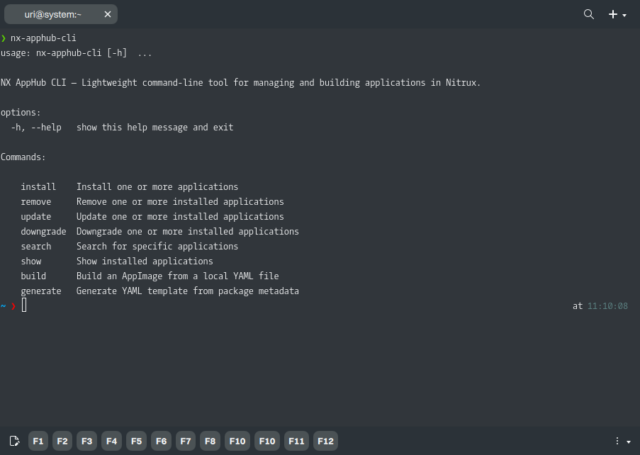
Nitrux, which is one of our favorite Linux-based Windows 11 alternatives, is rolling out a major upgrade to how users manage software on the system. The move, which is aimed at improving reliability and user control, replaces two aging tools — the NX Software Center and the zap CLI — with a new, purpose-built system called NX AppHub.
For those unfamiliar, Nitrux doesn’t use a traditional package manager like apt or rpm. Instead, it focuses on AppImages, which are self-contained applications that run independently of system libraries. Although this approach avoids dependency issues, it previously came with a rather major downside — apps were often outdated or pulled from unreliable sources. That’s where NX AppHub comes in.
SEE ALSO:
NX AppHub is a new system that simplifies how applications are built, installed, updated, and managed in Nitrux. It’s made up of several components, including a command-line tool (NX AppHub CLI), a central repository of app recipes (NX AppHub Apps), and a desktop integration service (NX AppHub Daemon). Together, these tools let users install or update applications with a single command — no root access required — while ensuring that every app is built from a curated, reproducible source.
This new approach is a big improvement over the old system. Previously, apps were pulled from external sites like AppImageHub, which could go offline or stop working at any time. Now, Nitrux maintains its own Git-based repository of app definitions, so users can trust that the software comes from a reliable and maintained source.

Apps in NX AppHub are packaged as “AppBoxes,” a more structured and consistent version of AppImages. They don’t rely on embedded update tools or third-party services. Instead, users can install specific versions, downgrade if needed, and easily see what’s installed, all from the terminal.
For users looking for a sleek, efficient Linux desktop that doesn’t rely on traditional package managers, NX AppHub, which will require the forthcoming Nitrux 4.0, goes someway to making the OS even more appealing.
Image Credit: Aaron Amat / Dreamstime.com




